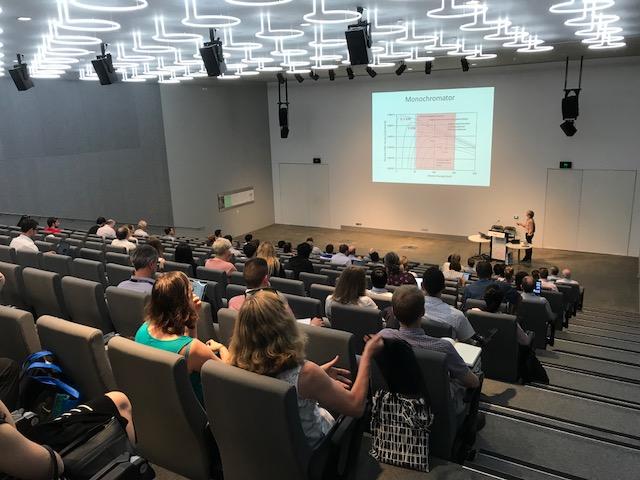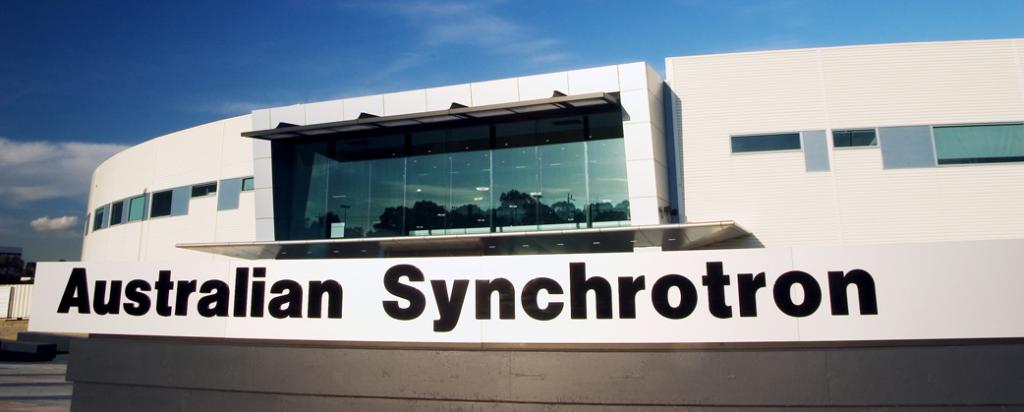

Published on the 1st December 2017 by ANSTO Staff
Approximately 190 participants attended the first combined ANSTO User Meeting, which was held at the Australian Synchrotron 22-24 November.

The event brought representatives of research communities together who have accessed various ANSTO infrastructure platforms.
“It was an opportunity to look at the scientific challenges and questions that are being addressed and consider how multiple techniques and experimental methods can be applied to answering those questions,” said co-convenor Dr Miles Apperley, Head of Research Infrastructure, who spoke at the opening.
ANSTO has nine research infrastructure platforms in total, including the Australian Centre for Neutron Scattering and the Australian Synchrotron that provide user-focused open-access support to researchers from Australia and across the globe.
Plenary speakers included leading Australian and International researchers.
Dr Michael Drakopoulos reviewed the basics of using the I12 beamline at the Diamond Light Source in the UK.
Professor Ian Gentle Deputy Executive Dean and Associate Dean Research of the Faculty of Science at the University of Queensland spoke about the use of neutrons to understand diffusion and stability of materials in organic optoelectronic devices.
Professor Elena P. Ivanova, a nano/biotechnology expert from the University of Swinburne, shared her research deciphering the enigma of bactericidal pattern of insect wing epicuticle.
Associate Professor Rachel Popelka-Filcoff of Flinders University shared how Indigenous Australian natural pigments can be explored using nuclear and spectroscopic methods.
Professor Sharon Robinson, Associate Dean Graduate Research and a Senior Professor in Biological Sciences discussed species on the move in Antarctic Terrestrial Communities.
The speakers emphasised emerging science trends in their respective fields and how new technologies and capabilities benefit that research.
Both ANSTO and researchers from other Australian institutions contributed to sessions over the three days.
ANSTO scientists described the capabilities that support their own research outcomes as they develop and apply leading edge instrument methods and techniques.
They included include Tom Carodoc- Davies, Gabriel Murphy, Jason Price, Kathleen Wood, Katie Sizeland, Pimm Vongsvivut, Wai Tung Lee, Mark Tobin, Vladimir Levchenko,
Anna Sokolova, Cameron Kewish, Anton Stampfl, Daniele Hausermann, Susan Cumberland, Santosh Panjikar, Michael Hotchkis, Jun Aishima, Peter Kappen, Dehong Yu, Stephen Holt, Ulf Garbe, Garry McIntyre, Zeljko Pastuovic, Mark Reid, and Zhiyang Wang.
Prof Michael James outlined the new BRIGHT Beamlines that are planned for the Australian Synchrotron.
Prof Andrew Peele awarded the Stephen Wilkins Medal to Leonie van ‘t Hag for her PhD thesis on the application of a crystallographic technique that is used to crate 3d structures of proteins.
“It is not just stainless steel and digital systems that make up the infrastructure which our users encounter at our facilities, but the expertise and dedication of our staff who ensure that they can turn that information into knowledge and innovation,“ said Apperley.
The organising committee was chaired by Dr Anthony Chesman from CSIRO, who is a user of the Australian Synchrotron, and comprised representatives of the ANBUG and Synchrotron user communities and ANSTO platforms.
The combined Users Meeting will be held in the multi-disciplinary format every second year and revert to separate user community meetings on the alternate years to ensure important focused and discipline specific work can continue.